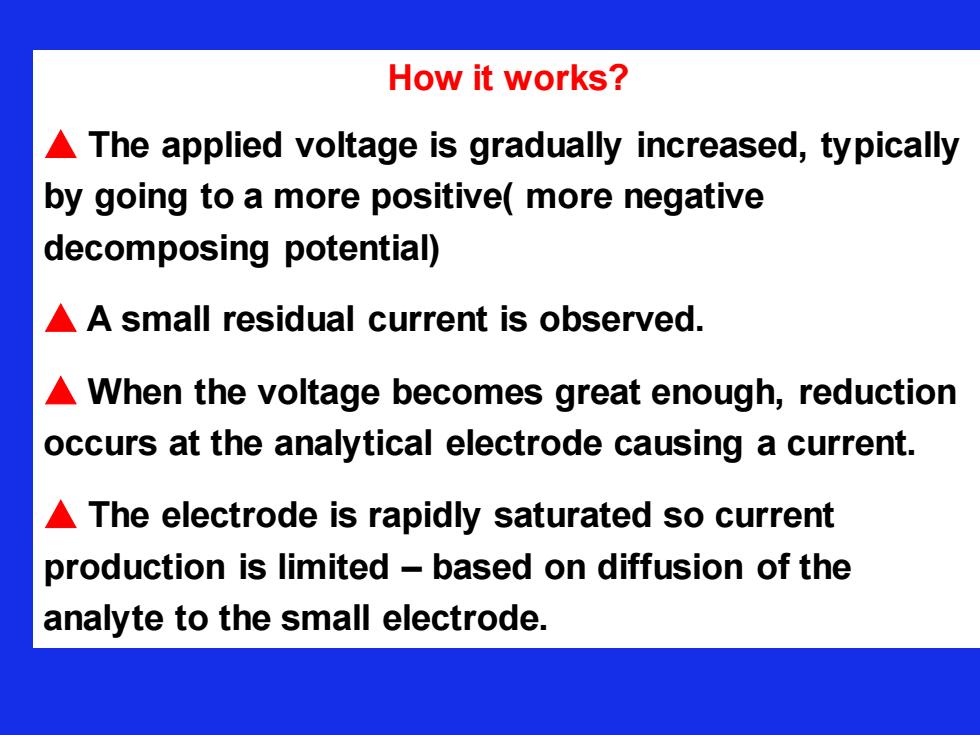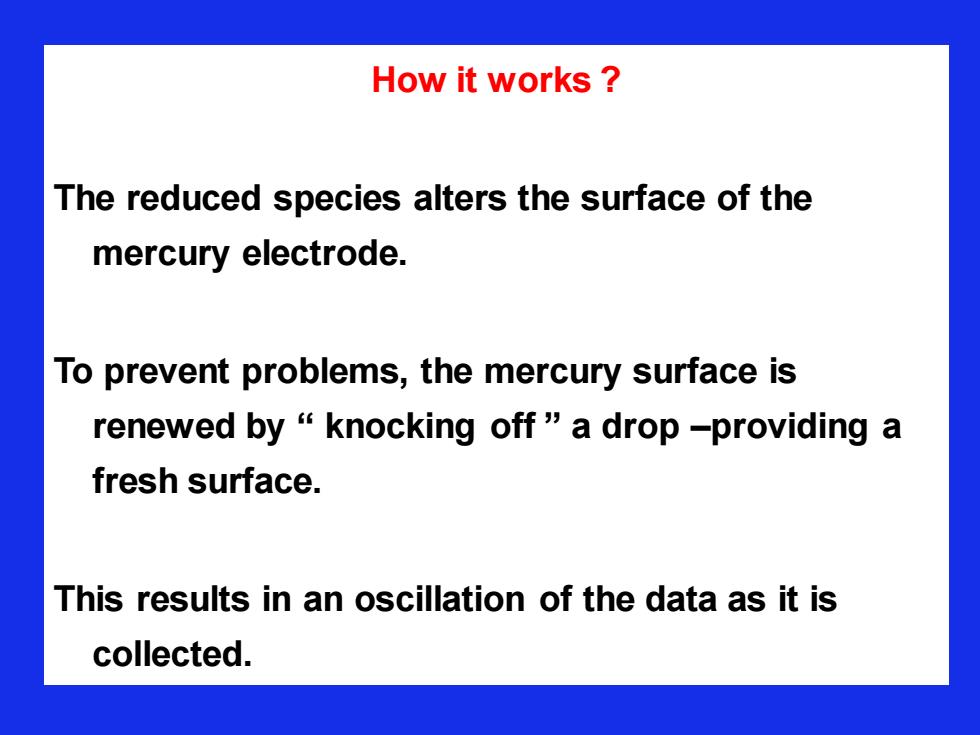
diffusion current residual current

How it works? ▲ The applied voltage is gradually increased, typically by going to a more positive( more negative decomposing potential) ▲ A small residual current is observed. ▲ When the voltage becomes great enough, reduction occurs at the analytical electrode causing a current. ▲ The electrode is rapidly saturated so current production is limited – based on diffusion of the analyte to the small electrode
How it works? ▲ The applied voltage is gradually increased, typically by going to a more positive( more negative decomposing potential) ▲ A small residual current is observed. ▲ When the voltage becomes great enough, reduction occurs at the analytical electrode causing a current. ▲ The electrode is rapidly saturated so current production is limited – based on diffusion of the analyte to the small electrode

How it works ? The reduced species alters the surface of the mercury electrode. To prevent problems, the mercury surface is renewed by “ knocking off ” a drop –providing a fresh surface. This results in an oscillation of the data as it is collected
How it works ? The reduced species alters the surface of the mercury electrode. To prevent problems, the mercury surface is renewed by “ knocking off ” a drop –providing a fresh surface. This results in an oscillation of the data as it is collected

●Direct comparison method Polarographically quantitative analytical methods If t, m, D and n are constant, then we can simplify things by using a standard. Then UNK STD d d C C i i UNK STD =
●Direct comparison method Polarographically quantitative analytical methods If t, m, D and n are constant, then we can simplify things by using a standard. Then UNK STD d d C C i i UNK STD =

Wave height of polarographic wave is determined easier than peak current, so following equation is in more common use UNK STD C C h h UNK STD =
Wave height of polarographic wave is determined easier than peak current, so following equation is in more common use UNK STD C C h h UNK STD =